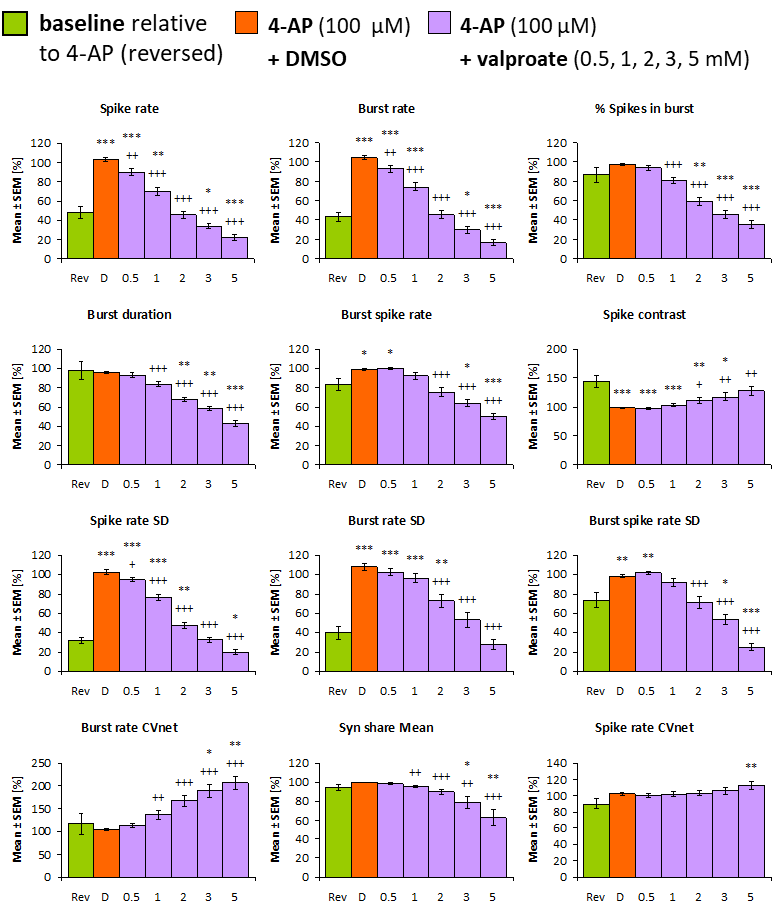4-AP – Epilepsy Assay
SCN1A model Developmental model
The potassium K+ channel blocker 4-aminopyridine (4-AP) induces epileptiform activity in in vitro preparations and is a potent convulsant in animals and humans. Our 4-AP model serves as a versatile tool for epilepsy research.
Overview:
4-AP has been utilized as a model compound for epilepsy for over 50 years. This assay demonstrates responsiveness to most Anti-Epileptic Drugs (AEDs).
Example:
Cell Culture: Experiments were conducted using primary hippocampus of mice. We applied 4-AP at a concentration of 100 µM.
4-AP at 100 µM increases spike and burst rates and synchronizes burst activity, as evidenced by a decrease in the Synchronization Share parameter. This correlates with EEG measures of ictal events in epilepsy.

Image: Multi-parametric characterization of neuronal activity after 4-AP and/or valproic acid treatment. Mean values are presented with standard error. Comparisons were conducted using Student’s unpaired t-test against water (*) and “4-AP 100 µM + water” (+).
Additional Offerings:We also offer this assay with murine frontal cortex cultures or human iPSC-derived neuronal cell cultures. This robust and reliable assay is well-suited for general epilepsy development programs.
Contact Us:
For further information or inquiries, please feel free to reach out to us.
 infobox@neuroproof.com
infobox@neuroproof.com +49 381 54345-660
+49 381 54345-660
